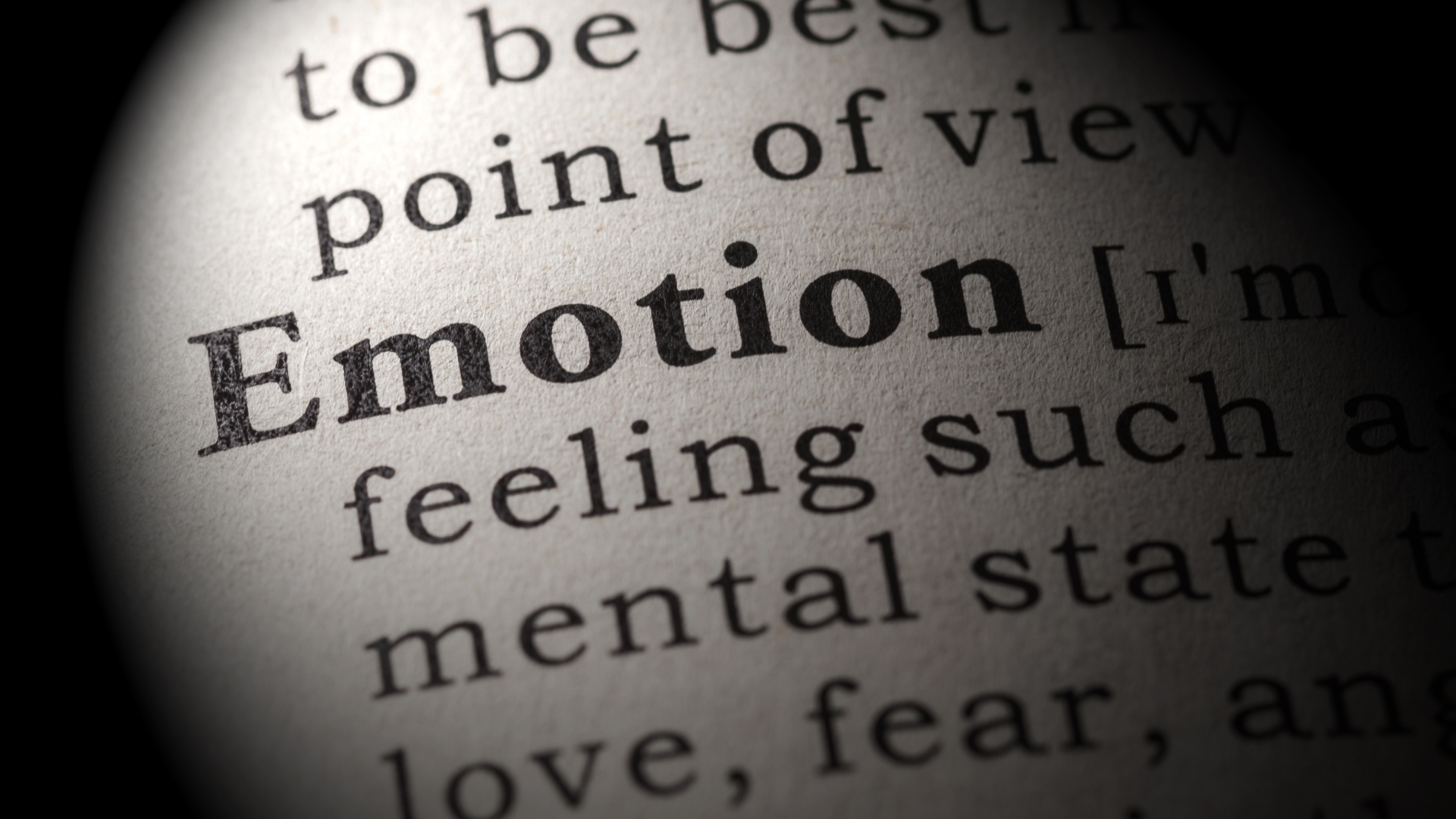In medical education, emotions in simulation play a crucial role, going far beyond the acquisition of technical skills. The importance of emotional skills, the neurobiological foundations of emotions, and an innovative gradient of emotions offer a new perspective to enrich learning and debriefing in simulated clinical scenarios.
“Tu chiamale se vuoi…” (Emozioni, L. Battisti, 1970)
Simulation in medicine involves professionals in a profound way.
Technical skills have always been the main focus of university training to maintain competence over time. For some years now, the focus has been on non-technical skills, behaviour, teamwork, the protection of the carer, the safety of the care recipient. Only recently has the importance of emotional skills been realised (Capogna, Ingrassia, et al 2022). Managing one’s own emotions and those of the team is an ongoing challenge.
Exiting the role is in simulation the phase in which one’s emotions are explored in a clinical scenario.
Neurobiological Foundations of Emotions
In the brain, emotions arise in the oldest part, the palencephalon, which includes the locus ceruleus, hippocampus, amygdala, insula, orbitofrontal cortex and anterior cingulate cortex. The higher cognitive functions of our brain are represented in the telencephalon. The cerebral cortex consciously processes perceptual stimuli. The palencephalon influences the telencephalon but the reverse does not occur. Reactions of the palencephalon are rapid, as in the expression of fear. Our body comes into contact with the outside world through the five senses: touch, sight, hearing, taste and smell. It is no coincidence that we speak of sensation or activation of one of the sense organs.
The brain transforms sensory information into perception.
Perception is never in its native state: emotional state, previous experiences, and perspective with respect to the object of sensation change the content of perception.
A classic experiment is the demonstration that colours do not exist in nature but are the result of the processing that the optic nerve receives and is processed at the neuronal level (Von Foerster 2001 cited in Nardone 2019).
Emotions arise from the perception of internal and external reality that originates from sensations (Watzalawick 1981). Considering the perception ->emotion -> reaction pathway (Nardone 2019) most of the time the interaction – perception – emotion occurs below the level of consciousness (Koch 2012). Cognitive processes are, therefore, not responsible for emotions because they are subsequent to the processing of emotions (Searle 1990).
Classification and Research on Emotions
A starting point is the research that studied universal emotions through non-verbal expressions in various cultures (Ekman 1973, Ekman 1985). In the first version, there were six universal emotions: fear, joy, anger, contempt, surprise, shame. In a recent version, the emotions were divided into primary and secondary. The primaries were reduced to four: fear, pain, pleasure and anger (Ekman 2010).
Another authoritative classification of basic or primary emotions is that provided by the American psychologist Robert Plutchik (1980). He distinguishes four pairs of emotion expressions: (1) joy versus sadness; (2) fear versus anger; (3) anticipation versus surprise; (4) disgust versus acceptance.
The notion remains that primary emotions are by nature unconscious, as a response to internal and external stimuli (Nardone 2019). Emotions are also a ‘competence without understanding’ (Dennet 2018).
Research in recent years has also analysed secondary emotions, which have increased from 6, to 8, to 11, up to 27. The limitation is that many emotions correspond to moods, feelings or attitudes (Nardone 2019).
The philosopher’s stone of neuroscience is the search for the biological seat of emotions in the brain. To date, experimental models have not achieved convincing results even with comparative anatomy and physiology models, as in the case of rats.
After conducting several experiments and observing the brains of hundreds of people with the aid of magnetic resonance techniques, Richard Davidson (2012) formulated the theory of emotional styles, according to which each person has his or her own particular emotional style, which would be the way each of us responds to life’s experiences. Each emotional style is governed by specific, identifiable brain circuits, and can be observed using objective laboratory methods. With this theory, we move from competence without understanding to conscious competence. The six emotional styles controlled by cognitive brain functions are: resilience, perspective, social intuition, self-awareness, context sensitivity, attention.
Scientific research is also concerned with the induction of emotions. The evocation of experiences, memories, fantasies have similar effects to the stimulus of the five senses and can therefore trigger the perception and activation of an emotion. It follows that our brain activates emotions and possible reactions, whether through sensory activation or introspection.
On the activation of emotions, there are at least four schools of thought (Nardone 2019).
- Psychoanalysis involves the induction of emotions through reenactment. The analyst helps the individual to bring up memories, dreams, intense experiences. Guided processing tends to remove traumas buried in the person’s unconscious starting with the emotions that provoked them.
- The behavioural method induces emotions through conditioned physiological reflex stimuli. By its nature it is experimental and takes place in the laboratory
- Hypnosis stimulates emotions through an altered state of consciousness with the aim of amplifying external and internal perceptions.
- Empathy is the relationship-based method between individuals to induce emotion. Emotion is shared (Rogers cited in Nardone 2019). Mirror neurons are the neurobiological demonstration of the value of the empathic relationship (Rizzolati 2006, Ramachandran 2010).
The last method is the most understandable even for those who do not work in the field of neuroscience. Health professionals deal with people who experience moments of great fragility. The exchange of emotions through empathy is a fundamental part of care. Simulation with its quest for realism tends towards the same result.
Emotions in Simulation and the Role of Debriefing
Debriefing after the clinical scenario is a reflective practice with good judgement. The debriefer analyses the short and long way of perception and reaction to the events that occurred during the scenario. The short route coincides with exiting the role, i.e. de-roleing. The question, still in or near the simulation room, “How do you feel?”, “How did you feel during the scenario?” explores the predominant emotion of the participant at that time, in that place, in that situation. With the strategic method, the emotion questions are oriented towards the 4 primary emotions, pleasure, pain, fear and anger. La prova per il The test for the participant is to have interpreted himself/herself in a simulated reality. Sometimes disappointment, anger, confusion emerge. Often the participant is satisfied with his performance. The emotion is personal and requires no comment during the exit from the role.
The long way is the debriefing, which by its nature is a reflective practice. In the course of the analysis, the debriefer might mention the emotion expressed by a participant upon exiting the role and analyse it in depth. One’s own perception becomes a cognitive process to reason about.
A good debriefer should lead the participant to a corrective emotional experience from the initial emotion. The term ‘corrective emotional experience’ was coined by the psychoanalyst F. Alexander in 1946, describing a therapeutic approach in which the patient is assisted through the direct experience of emotions to ‘correct’ the impact of previous negative experiences. Change is, in fact, the real goal of simulation: if the same situation were to occur again in real life, the approach would be more effective and the focus would be on teamwork.
Proposed classification of emotions in simulation
A 2017 study analysed 2185 short videos of people expressing an emotion and identified 27 emotions, between primary and secondary (Cowen and Keltner 2017). According to the authors, the boundary between the various emotional states is not clear-cut: the study’s graphs show that there is a gradient between emotions that makes them sometimes fluid.
The list of 27 emotions: Fear, Anger, (Pain, Sadness), (Pleasure, Joy, Happiness), Disgust, Surprise, Admiration, Adoration, Aesthetic Appreciation, Enjoyment, Anxiety, Astonishment, Embarrassment, Boredom, Tranquility, Confusion, Longing, Empathy (particularly in pain), Ecstasy, Excitement, Horror, Interest, Nostalgia, Relief, Romanticism, Fulfillment, Sexual Desire
The proposed classification of emotions in simulation suggests that not all 27 emotions identified in 2017 are relevant in this context. It is proposed that each primary emotion is linked to secondary emotions that represent a gradient of it. These emotions can belong either to the personal sphere, divided into the physical and the spiritual, or to the social sphere, which can be related to the individual person or the group. In particular, Pleasure is the primary emotion for the personal physical sphere, Pain for the spiritual, Fear for the individual social sphere and Anger for the group sphere. These primary categories give rise to a table showing the gradient of primary emotions. It is hypothesised that, in simulation, this gradient makes it easier for participants to express their emotions during the post-clinical debriefing. A specific study would be needed to confirm this hypothesis.
Gradient of primary emotions in simulations
| Personal sphere | Social sphere | |||
| Physical | Pleasure – Astonishment – Disgust | Relative to the person | Fear – Excitement – Enjoyment – Relief | |
| Spiritual | Pain – Sadness – Anxiety – Boredom – Surprise – Joy – Happiness | Related to the group | Anger – Embarrassment – Confusion – Interest Tranquillity | |
Conclusions
The importance of emotions in simulation emerges as a crucial element for deep and meaningful learning in the healthcare context. Through the neurobiological understanding of emotions and their classification, we are able to outline more effective strategies for debriefing and training, enabling professionals to navigate and manage emotional responses productively. The proposal of a specific classification for emotions in simulation suggests a new path to further refine these techniques, emphasising the need for future research to validate and refine this approach. Ultimately, recognising and integrating emotional dimensions in healthcare simulations not only enriches the training experience of professionals but also contributes to improving the quality of patient care, making healthcare professionals more prepared, empathetic and resilient in the face of clinical challenges.
Bibliography
Alexander F, French TM. et al. (1946). Psychoanalytic Therapy: Principles and Application, Ronald Press
Capogna G, Ingrassia PL, et al. (2022) Strategic Debriefing for Advanced Simulation, Springer
Cowen AS, Keltner D. Self-report captures 27 distinct categories of emotion bridged by continuous gradients. Proc Natl Acad Sci U S A. 2017 Sep 19;114(38):E7900-E7909. doi: 10.1073/pnas.1702247114. Epub 2017 Sep 5.
Davidson R, Begley S. (2012). La vita emotiva del cervello. Milano: Ponte alle Grazie.
Dennett DC (2018). Dai batteri a Bach. Come evolvere la mente. Milano: Raffaello Cortina.
Ekman P (1973). Darwin and Facial Expression. New York: Academic Press.
Ekman, P. (1985). Telling Lies. New York: Norton (trad. it. I volti della menzogna. Firenze: Giunti, 1989).
Ekman P. (2010). Te lo leggo in faccia. Riconoscere le emozioni anche quando sono nascoste. Torino: Amrita.
Koch C. (2012). Consciousness: Confessions of a Romantic Reductionist. Boston: The MIT Press (trad. it. Una coscienza. Confessioni di uno scienziato romantico. Torino: Codice, 2013).
Nardone G. (2019) Emozioni: istruzioni per l’uso, Adriano Salani Editore
Koch C. (2012). Consciousness: Confessions of a Romantic Reductionist. Boston: The MIT Press (trad. it. Una coscienza. Confessioni di uno scienziato romantico. Torino: Codice, 2013).
Ramachandran VS. (2010). Mirror Neurons and Imitation Learning as the Driving Force Behind ‘the Great Leap Forward’ in Human Evolution. Edge, 69, 29 maggio 2010.
Rizzolatti G, Sinigaglia C. (2006). So quel che fai. Il cervello che agisce e i neuroni specchio. Milano: Raffaello Cortina.
Searle JR. (1990). The Mystery of Consciousness. London: Granta Books (trad. it. Il mistero della coscienza. Milano: Raffaello Cortina, 1998).
Watzlawick P. (1981). Die Erfundene Wirklichkeit. München: R. Piper & Co. (trad. it. La realtà inventata. Milano: Feltrinelli, 1988).
LEGGI ANCHE












































